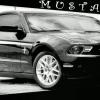Home
Tips & Tricks
Sony Tips
Sony a6400
Sony a6300
Sony a6000
Canon Tips
Canon M50 Mark II
Canon M50
Canon 6D Mark II
Canon 6D
Canon 7D Mark II
Canon 7D
Canon 90D
Canon 80D
Canon 77D
Canon 70D
Canon 60D
Canon T7 · 2000D
Canon T7i · 800D
Canon T6s · 760D
Canon T6i · 750D
Canon T6 · 1300D
Canon T5i · 700D
Canon T5 · 1200D
Canon T4i · 650D
Canon T3i · 600D
Canon T3 · 1100D
Canon T2i · 550D
Canon SL2 · 200D
Canon SL1 · 100D
Nikon Tips
Nikon D750
Nikon D500
Nikon D7500
Nikon D7200
Nikon D7100
Nikon D5600
Nikon D5500
Nikon D5300
Nikon D5200
Nikon D5100
Nikon D3500
Nikon D3400
Nikon D3300
Nikon D3200
Nikon D3100
Cheat Sheets
Sony Cheat Sheets
Sony a6300
Sony a6000
Canon Cheat Sheets
Canon M50 Mark II
Canon M50
Canon 6D Mark II
Canon 6D
Canon 7D Mark II
Canon 7D
Canon 90D
Canon 80D
Canon 77D
Canon 70D
Canon 60D
Canon T7 · 2000D
Canon T7i · 800D
Canon T6s · 760D
Canon T6i · 750D
Canon T5i · 700D
Canon T6 · 1300D
Canon T5 · 1200D
Canon T4i · 650D
Canon T3i · 600D
Canon T3 · 1100D
Canon T2i · 550D
Canon SL2 · 200D
Canon SL1 · 100D
Nikon Cheat Sheets
Nikon D750
Nikon D500
Nikon D7500
Nikon D7200
Nikon D7100
Nikon D5600
Nikon D5500
Nikon D5300
Nikon D5200
Nikon D5100
Nikon D3500
Nikon D3400
Nikon D3300
Nikon D3200
Nikon D3100


Comments
It will also help to have a wireless remote control, because the D3200 can do true time exposures (i.e. shutter remains open as long as you want, with hands off) with the remote, which it cannot do without. It's under ten bucks in many places. Target stores even have a ten dollar universal that works.
You'll need to do this with manual exposure and manual control of ISO, because the camera's meter will tend to overexpose.
Lightning varies greatly, but I've had pretty good luck in the past on film with an ISO around 100, aperture around f/8, and time exposure. If a storm is really intense with cloud to ground lightning close by you might want to close the lens down to f/11 or more to avoid blowout, but the main trunk of lightning will generally always blow out anyway. You must focus on the sky (or infinity) manually. Keep your field fairly wide. Open the shutter and then wait until lightning flashes. A few good flashes can be very impressive on one frame. Then close the shutter. Increase ISO or open up aperture if lightning is too faint, or if you're after cloud to cloud flashes way over the hills, but most lightning will stand out nicely anyway. Try to find some foreground elements that will show up dramatically when the sky lights up behind them. Background hills can work well too. Just lightning in the sky may not really say much unless the clouds themselves are really interesting.
If you have no remote, you can also shoot up to 30 seconds at a time. Set your camera on self timer with a short delay. You'll have to re-set the self timer for every shot (not the case with remote). The built in shutter control will go for up to 30 seconds. If you get lightning, you get it. If you don't, you get a black frame that you erase later.
For overall nighttime storms you will likely want a bit more exposure than pure lightning shots. You'll still have to experiment a bit to decide what effect you want. The camera's meter thinks the average tone of a picture should be 18 percent gray, and will tend to overexpose a night shot. The black shadows will tend to be washed out and objects that glow will tend to have an aura or halo. For rendering nighttime it's unrealistic, but in the right circumstances can produce an eerie twilit or moon-lit tone that can be effective. I've seen some nice effects in urban settings.
Owing to the way digital signals work, a bright exposure is less noisy and grainy than a dark one. You can recover a dark area by cranking up the gain, but with it you crank up the noise. An area that's blown out (overexposed to white) cannot be recovered at all. But within a certain margin, dark shots can be made quieter by shooting them a couple of stops too bright in Raw mode, and then using an editor such as View NX2 to reduce the exposure by up to two stops. When you do this, it's like turning down the digital volume; you reduce not only the brightness but the noise.
Remember above all that this is a digital camera with a shutter that's rated to be good for something like 150 thousand clicks. Shoot, shoot, shoot, and then shoot some more. Try everything.
However, the other thing you need to remember is that the D3200, unlike some of its pricier cousins, is not very weatherproof. When you go out in those storms, make sure you don't get caught in a downpour!
So for reliable long shutter speeds you're best off with M or S.